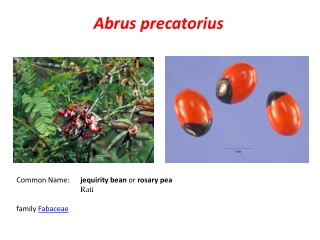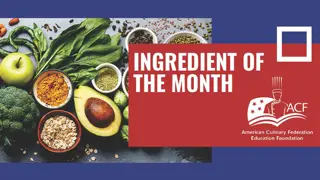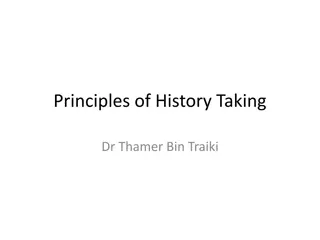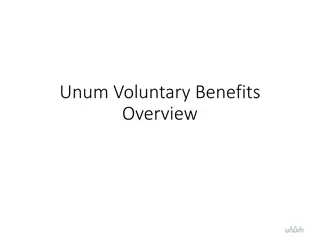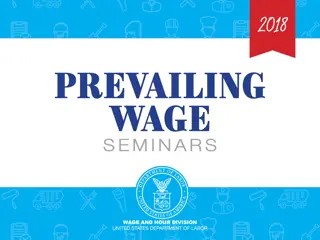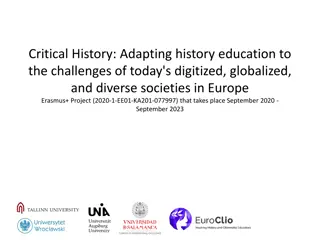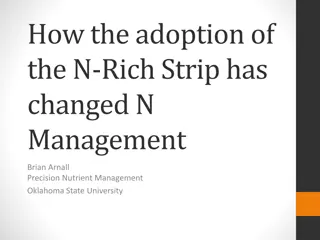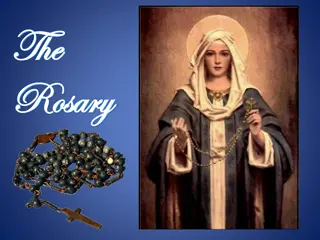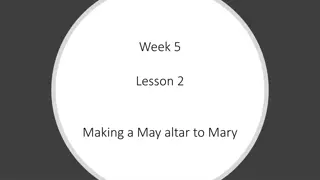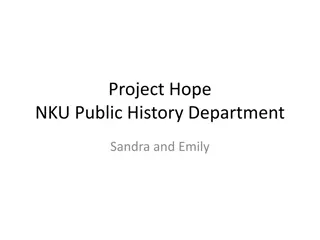Exploring the Rich History and Benefits of Saying the Rosary
Discover the origin, prayers, and significance of the rosary, a powerful tool for prayer, meditation, and community building. Learn how reciting the rosary helps us connect with Mary, focus on God, learn scriptures, and more.
Download Presentation

Please find below an Image/Link to download the presentation.
The content on the website is provided AS IS for your information and personal use only. It may not be sold, licensed, or shared on other websites without obtaining consent from the author. Download presentation by click this link. If you encounter any issues during the download, it is possible that the publisher has removed the file from their server.
E N D
Presentation Transcript
Why say the Rosary We learn our prayers. One of the coolest things about the rosary is that you knock out six prayers in one. The prayers in the rosary are, the Apostles Creed, the Our Father, the Hail Mary, the Glory Be, the Fatima prayer, and the Hail Holy Queen (not to mention the Sign of the Cross). Learning these prayers will help us in personal prayer and prayers in Church. It is an opportunity to build community. We share intentions before praying. This establishes a purpose to praying the rosary giving us something to think about. It teaches us to be quiet. Saying the rosary can be an opportunity to slow down, be quiet and focus on God. Repetitive prayer can be a very effective way to centre oneself. It helps us to become comfortable with intercessions to Mary. To put this simply: we ask Mary for prayers just as we ask each other for prayers. The difference is that Mary has a special link to her Son through whom all prayers are offered and also Mary is our mother. It teaches us about the Scriptures. Many people do not realise that praying the rosary is meant to be a meditation upon the life of Christ and Mary in the Scriptures. Although not every mystery of the rosary can be found specifically in the Bible, the rosary can be an effective way to explore the stories from the Bible.
History of the Rosary The traditional story of the rosary was that Mary herself appeared to Saint Dominic in the twelfth century. At that time, tradition says she gave him the rosary and promised Dominic that if he spread devotion to the rosary, his religious order would flourish. It is quite true that Dominic was quite devoted to the Blessed Mother, but no one knows for sure if Our Lady herself gave Dominic the rosary. If she did, it is quite certain that she did not give him a rosary that looks like the one we have today. Originally the rosary had 150 beads, the same number of psalms in the Bible. In the twelfth century, religious orders recited together the 150 Psalms as a way to mark the hours of the day and the days of the week. Those people who didn t know how to read wanted to share in this practice, so praying on a string of 150 beads or knots began as a parallel to praying the psalms. It was a way that the illiterate could remember the Lord and his mother throughout the day. This first rosary was prayed as we do today, a person would pass their fingers over each bead and say a prayer, usually the Our Father . The Hail Mary
The Hail Mary owes its origin to the rosary. When people said the rosary in the twelfth century, Gabrielle s greeting Hail Mary, full or grace, the Lord is with thee was often said along with the Our Father. Later, Elizabeth s greeting blessed are you among women was added. It was not until the sixteenth century that the words Holy Mary., Mother of God, pray for us sinners now and at the hour of our death were added. Various people have added other things to the rosary over the centuries. In the fifteenth century, the rosary was divided into fifteen brackets (or decades) and a Dominican monk assigned mysteries to each of the decades. These mysteries were events in the life of Jesus as written in the gospels. By meditating on these events even the illiterate could know the stories in the Bible. These decades were the same as ours except for the last two Glorious mysteries. In those two, the Coronation and the Assumption together made up the fourteenth decade and the fifteenth decade was the Last Judgment. On October 16, 2002, Pope John Paul II, declared that the following year would be the Year of the Rosary . For the first time in centuries a change was made in the rosary. The Pope added and defined 5 new mysteries that concerned events in the public life of Jesus. These new mysteries were called the Luminous Mysteries or Mysteries of Light Today s complete rosary is now made up of twenty decades of the Hail Mary, separated by an Our Father and a Glory Be and sometimes the Fatima prayer. Evidence again that the rosary is a living prayer that grows with the church. We usually break the rosary into four sets. The four sets are The Joyful Mysteries, The Sorrowful Mysteries, The Glorious Mysteries, and the Luminous Mysteries. One set is prayed on a rosary that has five decades. Each set is prayed on designated days of the week. Despite all the additions and changes, the important core of the rosary has always remained the same. It is a way for God s people to make holy the day, and to remember the life of Jesus and his mother. May these humble origins always be with us each time we pray the rosary.
How do we pray the rosary Each day people pray 5 decades of the rosary and each decade represents an event in the life of Jesus and his mother. The five decades prayed each day make up a mystery. There are four sets of mysteries on the rosary On Monday and Saturday, meditate on the Joyful Mysteries On Thursday, meditate on the Luminous Mysteries On Tuesday and Friday, meditate on the Sorrowful Mysteries On Wednesday and Sunday, meditate on the Glorious Mysteries
The rosary each day is broken up into the following An Introduction Bless yourself, recite the creed, recite the our father, three hail Marys, glory be, Fatima prayer. Five decades of the rosary Each made up of our father, ten hail Marys, glory be Fatima prayer. Conclusion HAIL HOLY QUEEN O GOD, WHOSE OUR FATHER, HAIL MARY, GLORY BE (FOR THE POPE) MEMORARE BLESS YOURSELF See: http://www.rosaryarmy.com/wpcontent/themes/mimbo2.2/images /howtopraytherosary.pdf
October is the month of the rosary Because October 7 is the feast of our lady of the Rosary
Activity- make your own rosary beads (One decade) https://lh6.googleusercontent.com/-uv9E2i2fuTk/TW5QU7pMrMI/AAAAAAAAE2I/BBNW6abEAiI/s400/rosary+craft.jpg You will need Pipe cleaners Small craft beads scissors Place 10 beads of your choice onto a pipe cleaner Bring the pipe cleaner around into a circle and twist it shut Place on one more bead for the our father Cut off the extra piece and twist it around to make the cross, trim of the excess where necessary.









